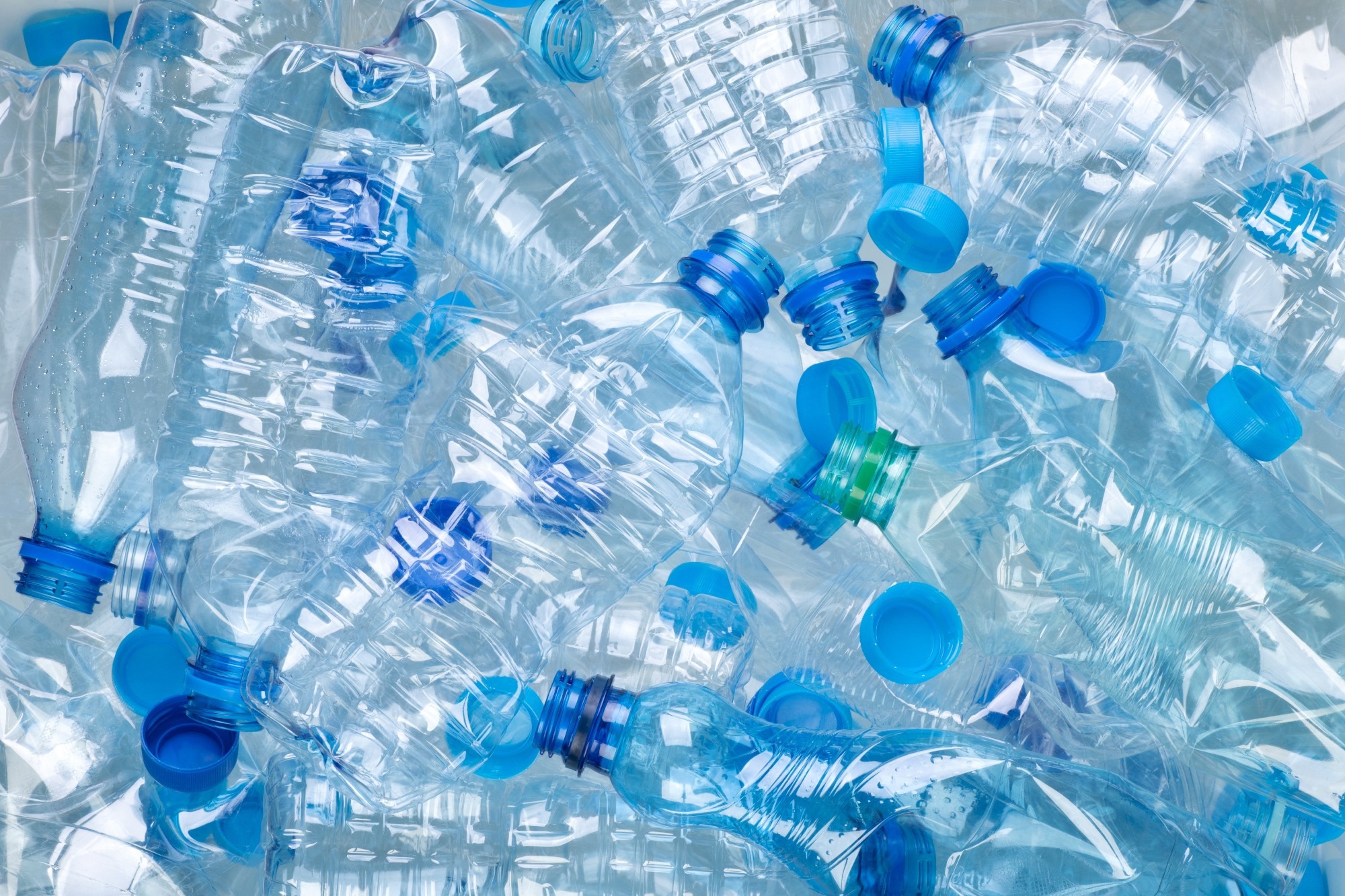PET plastic (polyethylene terephthalate) is the most commonly used plastic that is used to manufacture single-use packaging, including drink containers. In the US, over 85% of single-use plastic water bottles end up in landfills or oceans.

Image Credit: photka/Shutterstock.com
In order to tackle the growing plastic problem, Chemists at the University of Colorado Boulder (CU Boulder) have devised an innovative, new method for recycling PET plastic. Known as electrochemical plastic dissolution, the technique deploys a combination of chemical reactions and electrolysis – a process that uses electricity to separate water into hydrogen and oxygen.
Published in the journal Chem Catalysis, the researchers describe their method of electrochemical plastic dissolution as an electricity-driven recycling methodology.
The team claims that the technology can offer a deep “mechanistic understanding from reactions of small molecules that then can translate into sustainable, scalable technological methods for macromolecule deconstruction.”
In simple terms, the method leverages electrolysis and chemical reactions to break down the plastic molecules, which seemingly disintegrate in just a few hours.
Diffuse the Plastic Problem
Humanity depends on plastic in everyday applications, ranging from food packing and consumer electronics to safety devices and key safety components in the transportation sector. Yet, despite our best efforts to recycle plastic that is no longer in use, plastic still accounts for a huge proportion of all marine waste across the globe.
We pat ourselves on the back when we toss something into the recycling bin, but most of that recyclable plastic never winds up being recycled.
Oana Luca, Assistant Professor, Department of Chemistry, UC Boulder
For these reasons, the team turned its attention to developing new methods to address the plastic problem and focused on the most widely-used plastic - polyethylene terephthalate, PET.
We wanted to find out how we could recover molecular materials, the building blocks of plastics, so that we can use them again.
Oana Luca, Assistant Professor, Department of Chemistry, UC Boulder
In the lab, the UC Boulder team ran a series of small-scale tests by mixing small amounts of PET with a chemical molecule and then introducing an electrical current into the mix. In just a short time, the team noticed the PET pieces seemingly disappeared in the solution.
They achieved this by grinding up PET into a powder-like substance and mixing it with a chemical solution for electrolysis. The team added an extra molecule [N-DMBI]+ salt, forming a “reactive mediator” that breaks down the PET molecules when the electrical current is applied.
It was awesome to actually observe the reaction progress in real time…The solution first turns a deep pink color, then becomes clear as the polymer breaks apart.
Phuc Pham, Doctoral Student, UC Boulder
New Ways of Recycling
While the team has a long way to go before they can apply the method at scale to fully diffuse the plastic problem, break down all the plastic, and prevent it from entering the environment, this research marks a significant step in the right direction.
The team hopes that its research highlights the need to find new ways of recycling. Simply separating our consumer items and plastics into different colored bins is not sufficient, especially as most plastic is not actually recycled but ends up in landfill.
When in landfill, the plastic slowly breaks down into microplastics, entering the environment and food chain. Microplastics have now been found everywhere, from Antarctica to the deepest part of the ocean and inside the human body.
Luca and her team aim to use their method to dissolve PET plastic and then retrieve the individual molecules to use as building blocks for new materials made from recycled goods, even if it is as simple as making a new plastic bottle from an old one.
If I were to have my way as a mad scientist, I would use these electrochemical methods to break down many different kinds of plastic at once… That way, you could, for example, go to these massive garbage patches in the ocean, pull all of that waste into a reactor and get a lot of useful molecules back.
Oana Luca, Assistant Professor, Department of Chemistry, UC Boulder
The main challenge is taking the method out of the lab and into the real world to address plastic pollution and make the world’s oceans and landscapes cleaner while creating new products simultaneously.
References and Further Reading
Strain, D. (2023) The future of recycling could one day mean dissolving plastic with electricity, CU Boulder Today. Available at: https://www.colorado.edu/today/2023/07/05/future-recycling-could-one-day-mean-dissolving-plastic-electricity
Pham, P.H. et al. (2023) ‘Electricity-driven recycling of ester plastics using one-electron electro-organocatalysis’, Chem Catalysis, p. 100675. Available at: https://www.sciencedirect.com/science/article/abs/pii/S2667109323002026.
Disclaimer: The views expressed here are those of the author expressed in their private capacity and do not necessarily represent the views of AZoM.com Limited T/A AZoNetwork the owner and operator of this website. This disclaimer forms part of the Terms and conditions of use of this website.